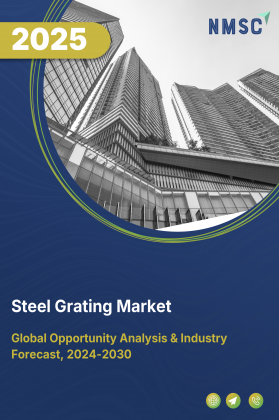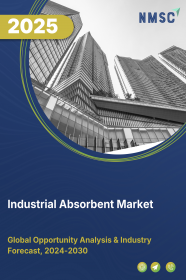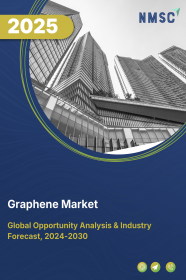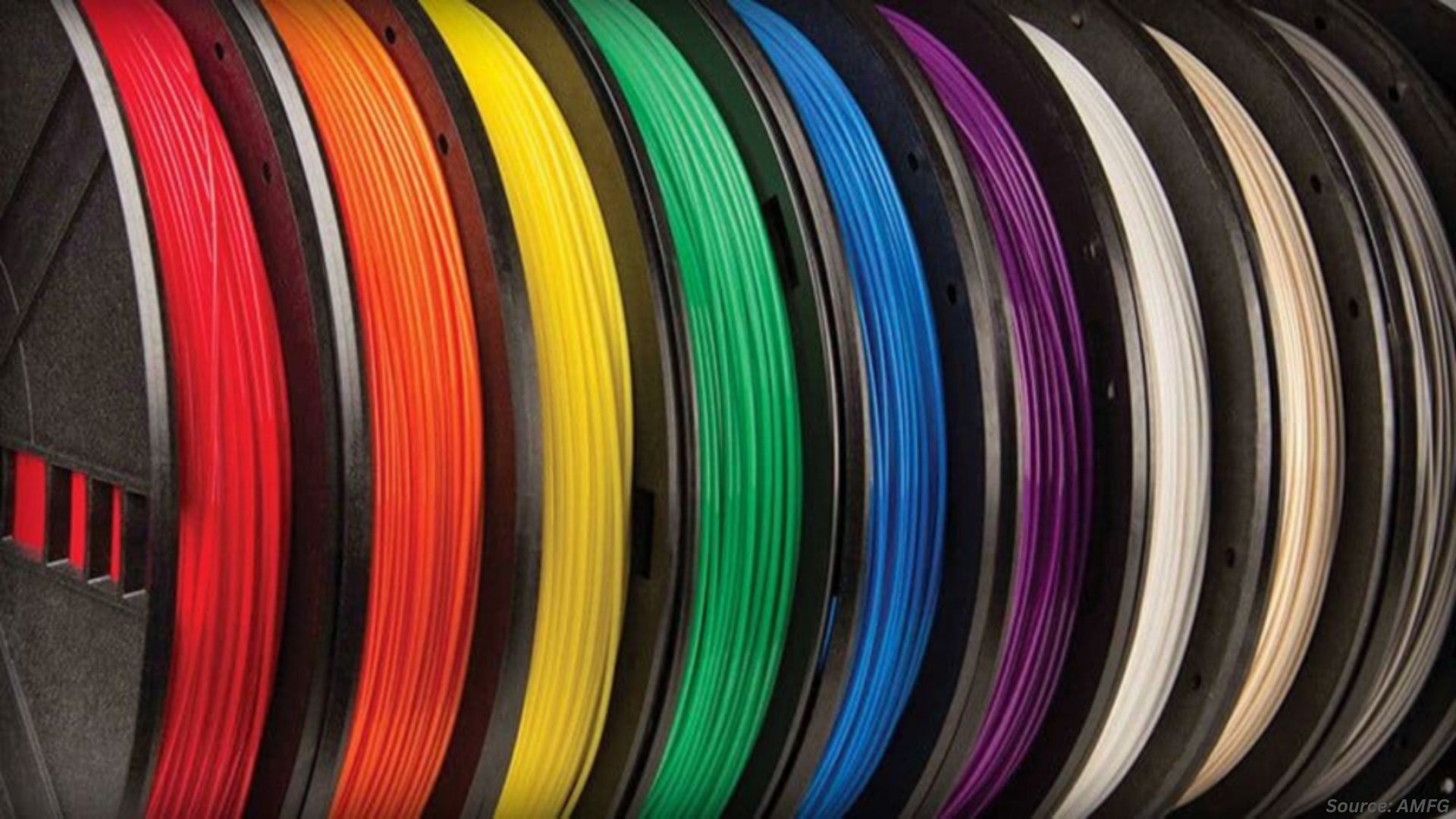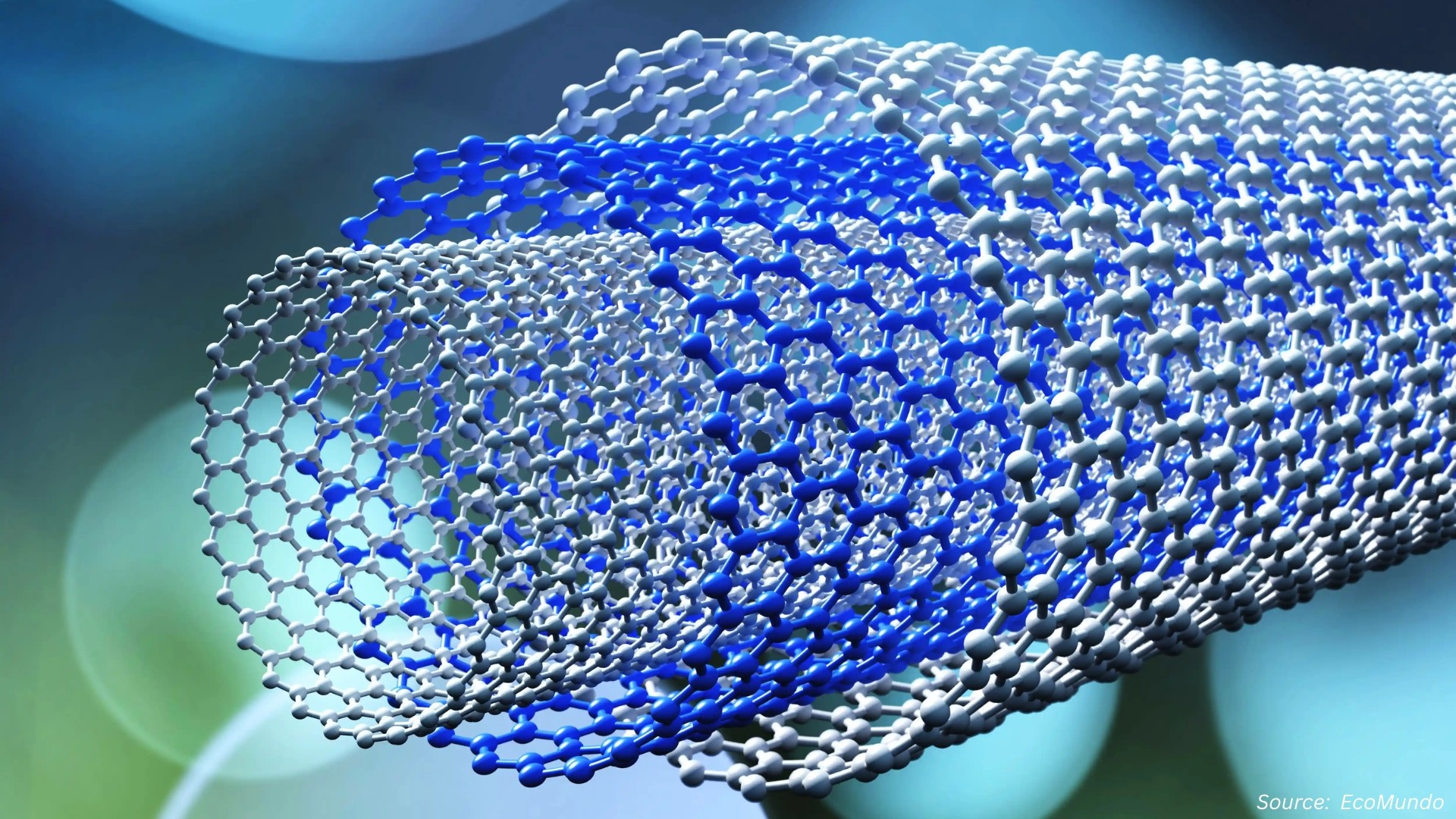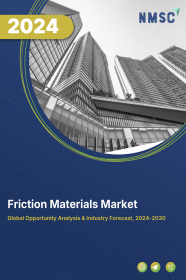
Friction Materials Market by Product (Lining, Pads, Blocks, and Discs), by Material (Asbestos, Ceramic, Sintered Metals, Semi- Metallic, Aramid Fibres, and Others), by Business Type (Original Equipment, Aftersales and Others), by Application (Brakes, Clutches, Gear Tooth Systems, Transmission Systems, and Others) and by End User Industry (Railway, Automotive, Construction, Marine, Aerospace and Mining) - Global Opportunity Analysis and Industry Forecast 2022-2030
Market Definition
The Friction Materials Market size was valued at US$ 55.1 million in 2021 and is predicted to reach US$ 85.5 million by 2030 with a CAGR of 5.0% from 2022-2030.
Friction Materials, also known as brake or clutch materials, are usually applied to decrease or halt the speed of a vehicle by changing kinetic into thermal energy with the help of friction. These materials are produced by organic and inorganic substances such as metals, fibres, ceramics, and others. Friction materials come in a variety of shapes and types; hence these are adaptable to any type of application such as brakes, transmission systems, and others, as well as each configuration and shapes, which are intended to perform a specific function. Friction materials are mainly used in transportation as braking material, parts of clutching systems, and transmissions. Friction materials include friction discs, clutch discs, clutch facings, brake pads, brake lining, brake shoes, and block brakes.
Market Dynamics and Trends
The upsurge in demand for commercial and passenger vehicles across the world that incorporates friction materials such as friction disks, clutch discs, and brake pads is a significant factor driving the growth of the friction materials market. Also, the lack of inter-city public transport services in several cities of America such as Texas, Florida, and Oklahoma, and growing disposable income in developing countries such as India, and China, causes a massive increase in private vehicle ownership hereby increasing the market sales of friction materials.
Moreover, owing to the rise in overall population worldwide, the demand for infrastructure and the construction industry is rising which utilizes friction materials to regulate power transmission in industrial and construction machinery that influences the friction materials market worldwide. Furthermore, the friction materials are capable to withstand depreciation of the surfaces well as high temperatures which serve as an important factor in escalating the growth of the market.
However, the lack of advanced friction materials along with the high cost of friction materials are factors that are expected to restrain the growth of the market during the forecast period. On the contrary, the demand for lightweight friction materials in the automotive industry to reduce the weight of the vehicle and provide high-duty braking performance is anticipated to create favorable opportunities in the global friction materials market over the forecast period.
Market Segmentations and Scope of the Study:
The friction materials market is segmented on the basis of product, material, business type, application, end-user industry, and geography. Based on the product, the market is classified into lining, pads, blocks, and discs. On the basis of material, the market is divided into asbestos, ceramic, sintered metals, semi-metallic, aramid fibers, and others. Based on business type, the market is categorized into original equipment, aftersales, and others. Based on application, the market is divided into brakes, clutches, gear tooth systems, and transmission systems among others. Based on the end-user industry, the market is divided into the railway, automotive, construction, marine, Aerospace, and mining. Geographical breakdown and analysis of each of the aforesaid classifications include regions comprising of North America, Europe, Asia-Pacific, and the Rest of the world (RoW).
Geographical Analysis
The Asia Pacific region holds the predominant share of friction materials and is anticipated to continue its dominance throughout the forecast period. This is attributed to factors such as the hugely populated countries like China, South Korea, and India along with their urbanization and industrialization. Also, the market in this region is driven by the production activities of key industries such as automotive, aerospace, and more. For instance, according to Internationale des Constructeurs d'Automobiles (OICA), in the year 2020, the total production of automotive vehicles was 44,276,549 units and it reached 46,732,785, in the year 2021 that is an increase of about 6%. This, in turn, is expected to penetrate the growth of the market.
On the other hand, North America shows moderate growth in the friction materials market due to the rise in manufacturing industries that has a wide application of robots, which incorporates friction materials for controlling their moving parts. Also, the growing uses of friction materials in the well-established Aerospace and Defence industry in this region, with the US being its largest producer and exporter is expected to drive the market in this region in upcoming years. For instance, in 2020, the United States contributed 80.9 billion U.S. dollars in aerospace exports, which makes it the leading country in terms of aerospace exports to other nations.
Competitive Landscape
The friction materials market comprises various market players such as Akebono Brake Industry, Nisshinbo Holdings Ltd., Miba AG, ANAND Group, Carlisle Brake and Friction, ABS Friction, Federal Mogul Holdings, Fras-le, Hindustan Composites Ltd. and Yantai Haina Brake Technology Co. Ltd. These key market players are adopting several strategies such as joint ventures and launches to sustain their dominance in the friction materials market.
For instance, in July 2021, ANAND Group announced to set up of its new joint venture company with Mando Corporation, South Korea and named it Anand Mando eMobility Pvt Ltd., to meet the demands of the growing electric vehicles segment. This venture is a significant move for manufacturing and marketing Electric Vehicles (EVs) as well as delivering a technologically advanced product with better engineering capability. Also, in October 2021, Carlisle Brake and Friction announced the launch of its next-generation friction materials such as EPD468, EPD824, and N680 to meet the heavy-duty mining equipment demands. These materials will deliver innovative and high-energy formulations that expand the power capacities of wet friction materials.
Key Benefits
-
The friction materials market report provides the quantitative analysis of the current market and estimations through 2022-2030 that assist in identifying the prevailing market opportunities to capitalize on.
-
The study comprises a deep dive analysis of the friction materials market trend including the current and future trends for depicting the prevalent investment pockets in the market.
-
The information related to key drivers, restraints, and opportunities and their impact on the friction materials market is provided in the report.
-
The competitive analysis of the market players along with their market share in the friction materials market.
-
The SWOT analysis and Porter’s Five Forces model is elaborated in the study.
-
Value chain analysis in the market study provides a clear picture of the stakeholders’ roles.
Key Market Segments
By Product
-
Lining
-
Pads
-
Blocks
-
Discs
By Material
-
Asbestos
-
Ceramic
-
Sintered Metals
-
Semi-metallic
-
Aramid Fibers
-
Others
By Business Type
-
Original Equipment
-
Aftersales
-
Others
By Application
-
Brakes
-
Clutches
-
Gear Tooth Systems
-
Transmission Systems
-
Others
By End-User Industry
-
Railway
-
Automotive
-
Construction
-
Marine
-
Aerospace
-
Mining
By Geography
-
North America
-
U.S
-
Canada
-
Mexico
-
-
Europe
-
UK
-
Germany
-
France
-
Italy
-
Spain
-
Rest of Europe
-
-
Asia-Pacific
-
China
-
India
-
Japan
-
South Korea
-
Australia
-
Rest of Asia-Pacific
-
-
RoW
-
UAE
-
Saudi Arabia
-
South Africa
-
Brazil
-
Remaining Countries
-
KEY PLAYERS
-
Akebono Brake Industry
-
Nisshinbo Holdings Ltd.
-
MIBA AG
-
ANAND Group
-
Carlisle Brake and Friction
-
ABS Friction
-
Federal Mogul Holdings
-
Fras-le
-
Hindustan Composites Ltd.
-
Yantai Hi-Pad Brake Technology




















 Speak to Our Analyst
Speak to Our Analyst



